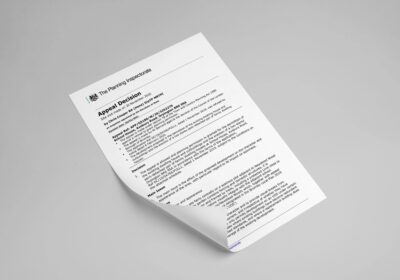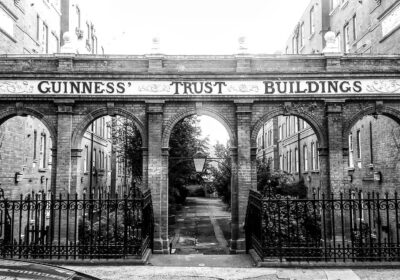The Secretary of State’s decision to overturn his Inspector concerning Westferry Printworks tells us a number of things about the direction of travel in Whitehall.
For those unfamiliar: the Westferry Printworks is a 15-acre site within the Isle of Dogs which had been originally consented under the previous Mayor of London. The old permission had been for 722 homes, a secondary school and some ancillary uses with 20% of the homes affordable.
Mace, the development managers, submitted a new proposal to Tower Hamlets in 2018 more than doubling density to 1,530 homes with ancillary uses. The proposal included towers ranging from 19 to 44 storeys.
The new scheme was refused by Tower Hamlets when the applicant had appealed for non-determination.
The refusal was upheld by the Planning Inspectorate on grounds including an unacceptable level of affordable housing and the impact on nearby heritage sites including the Old Royal Naval College and Tower Bridge. However, the Secretary of State has taken a different view.
Some of the finer technical points have been well covered by Simon Ricketts in his blog Simonicity so I’ll stick to some broader strategic insights into what this decision could mean:
- Numbers mean more to this Government then tenures
Jenrick’s decision to overturn the Inspector’s position was heavily weighted to the benefits of housing numbers rather than notional proportions of affordable housing that may be achieved. The revised proposal provided a much higher quantum of homes but fell far short of the target 35% affordable housing requirement. The shortfall was acknowledged:
He agrees with the Inspector that, on the balance of the available evidence, it is likely that the scheme could provide more affordable housing and that 21% does not therefore represent the maximum reasonable amount of affordable housing…
However, unlike the Inspector, Jenrick did not see this in itself as a reason to stop the development:
The Secretary of State considers, however, that while not in line with the policy requirements for affordable housing, an increase in affordable units from 140 to 282 (IR583) provided by the appeal scheme as against the consented scheme is a benefit of the scheme.
On balance, it would appear that Jenrick subscribed to the old proverb: ‘A bird in the hand…’ Whilst there might be a scheme that could deliver more, that was not in front of him and what was in front of him was good enough.
- Heritage and height: important but so is more housing
Jenrick acknowledged that there would be a heritage impact as a consequence of the new proposals but considered this would amount to ‘less than substantial harm’. In his decision, he took the view that whilst the proposal might not result in a stepping down in height from the centre of the designated tall building cluster- something considered important by Tower Hamlets, this only had a moderate weight in his decision making.
Essentially, the message from Government is strategic housing sites should go for density. In his decision, Jenrick clearly weighted the delivery of housing above the ‘less than substantial’ harm to the heritage assets identified.
Having regard to the housing and employment benefits identified above, the Secretary of State disagrees with the Inspector and considers that these benefits do outweigh the harm identified
- Benchmark land values, planning gain and what this could mean for planning reform
The decision letter was published on 14 January 2020, three days before the new Tower Hamlets CiL schedule was published. The consequence was that the Authority missed out on infrastructure payments upwards of £40 million.
Moreover, the Secretary of State avoided the thorny debate in the Inspector’s report on what a benchmark land value might be. The applicant took the view that the land should be valued on Alternative Use Value i.e. the old, extant permission. The Council and GLA went for an existing use value – i.e. an industrial value for the site. This led to a huge gap in opinion on land value which is the starting point for how much affordable housing might be delivered.
The GLA/Council argument was and is that the current permission could not be considered applicable because it was under an old policy regime. This was upheld by the Inspector and other developers should take note. The Secretary State did not address this point and so it should be taken as a given that developers can no longer bank on old consents to prop up value.
Yet Jenrick cut the gordian knot. He didn’t address it, he simply took the view that the developer should get on with delivering. Reading between the lines, with planning reforms on the horizon, this decision could shed light on wider thinking in Government. The current requirements around planning gain are terribly complex and lead to a range of tensions.
A regime of CiL, affordable housing negotiation executed through viability with different conceptions of land value and late stage review has made for an increasingly complex system. At one stage, the applicant had offered to deliver 35% affordable to gain a fast track approach, but this was withdrawn following refusal during the appeal.
Could a simpler system get a better result and what could that look like? This will be a question being asked in Whitehall right now. Meanwhile, Tower Hamlets is considering its options. They will feel rightly hard done by given the timings on CiL regulations and the result here, which follows a number of other decisions going against them at appeal.










